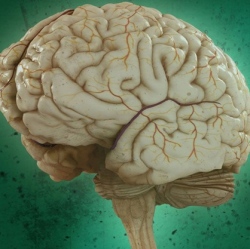
Increased communication between distant brain regions helps older adults compensate for the negative aspects of aging, reports a new study published this week in Human Brain Mapping. The aged brain tends to show more bilateral communication than the young brain.
While this finding has been observed many times, it has not been clear whether this phenomena is helpful or harmful and no study has directly manipulated this effect, until now.
"This study provides an explicit test of some controversial ideas about how the brain reorganizes as we age," said lead author Simon Davis, PhD. "These results suggest that the aging brain maintains healthy cognitive function by increasing bilateral communication."
Simon Davis and colleagues used a brain stimulation technique known as transcranial magnetic stimulation (TMS) to modulate brain activity of healthy older adults while they performed a memory task. When researchers applied TMS at a frequency that depressed activity in one memory region in the left hemisphere, communication increased with the same region in the right hemisphere, suggesting the right hemisphere was compensating to help with the task.
In contrast, when the same prefrontal site was excited, communication was increased only in the local network of regions in the left hemisphere. This suggested that communication between the hemispheres is a deliberate process that occurs on an “as needed” basis.
Furthermore, when the authors examined the white matter pathways between these bilateral regions, participants with stronger white matter fibers connecting left and right hemispheres demonstrated greater bilateral communication, strong evidence that structural neuroplasticity keeps the brain working efficiently in later life.
"Good roads make for efficient travel, and the brain is no different. By taking advantage of available pathways, aging brains may find an alternate route to complete the neural computations necessary for functioning," said Davis.
These results suggest that greater bilaterality in the prefrontal cortex might be the result of the aging brain adapting to the damage endured over the lifespan, in an effort to maintain normal function. Future brain-stimulation techniques could target this bilateral effect in effort to promote communication between the hemispheres and, hopefully, engender healthy cognition throughout the lifespan. Read the full article in Human Brain Mapping here.
